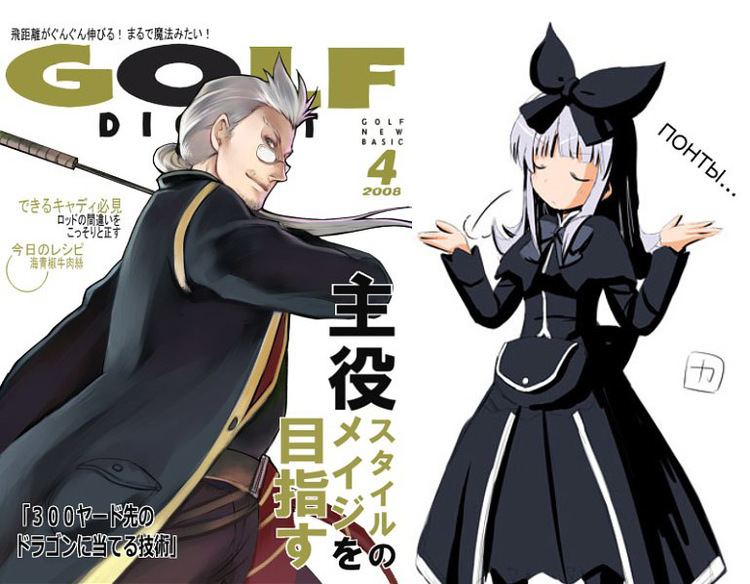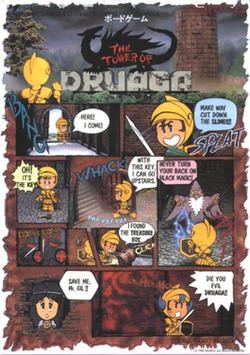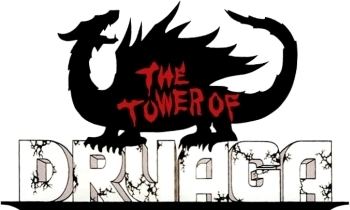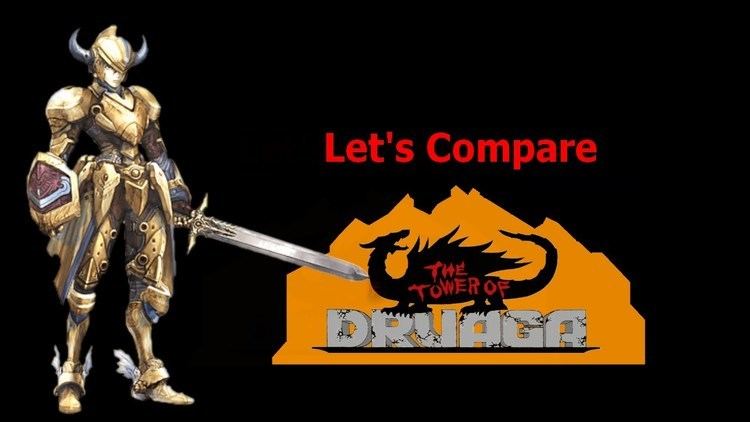3 /10 1 Votes
Artist(s) Yuichiro Shinozaki | 3/10 IGN Programmer(s) Satoshi Naito Composer(s) Junko Ozawa Initial release date June 1984 Designer Masanobu Endō | |||||||||||||||||||||||||||||||||
 | ||||||||||||||||||||||||||||||||||
Mode(s) Up to 2 players, alternating turns Adaptations The Tower of Druaga (2008) Similar Babylonian Castle Saga games, Namco games, Action role-playing games | ||||||||||||||||||||||||||||||||||
The tower of druaga no death walkthrough part 1 14
The Tower of Druaga (ドルアーガの塔, Doruāga no Tō) is a maze-based action role-playing arcade game released by Namco in 1984. It is the first game in the Babylonian Castle Saga series, inspired by Sumerian and Babylonian mythology, including the Epic of Gilgamesh and Tower of Babel.
Contents
- The tower of druaga no death walkthrough part 1 14
- Let s compare the tower of druaga
- Gameplay
- Gilgamesh
- Ki
- Ishtar
- Druaga
- Ports
- PC Engine remake
- Sequels
- Anime series
- References

It was conceived as a "fantasy Pac-Man" with combat, puzzle-solving and subtle role-playing elements. The Tower of Druaga was a success in Japan, where it attracted millions of fans, with its mix of arcade action and role-playing elements. It laid the foundations for the action role-playing game genre, as it largely began the trend of combining arcade-style action mechanics with RPG elements. It inspired a number of action role-playing games, including Dragon Slayer, Courageous Perseus, Hydlide, and Ys, as well as The Legend of Zelda, in addition to Dragon Quest creator Koichi Nakamura.

The Tower of Druaga runs on Namco Super Pac-Man hardware but with a video system like that used in Mappy, and is the first game from Namco to display its year in Roman numerals on the title screen. It was later ported to the MSX, Famicom and remade for the PC Engine platform by Game Studio. Its first appearance outside Japan was in the third compilation of the Namco Museum Volume series for the PlayStation and also appears on Namco Museum compilations for Nintendo DS, PSP, and Xbox 360.

Originally the game and its sequels had no specific setting other than "the tower". However, in recent years, the series has been retconned as being set in the fantasy kingdom of "Babylim". A 2008 anime series, beginning with The Tower of Druaga: The Aegis of Uruk, uses the game as its back story, though is set many decades later.

Let s compare the tower of druaga
Gameplay

The player assumes the role of the hero Gilgamesh, whose goal is to rescue the maiden Ki (カイ, Kai) from the demon Druaga. To do this, he must traverse through 60 floors of an immense tower. Gilgamesh comes equipped with a sword, which he can use to defeat monsters, and a shield, which can be used to block magical attacks. The monsters get progressively more difficult as the game progresses, beginning with simple slimes and culminating with Druaga himself. Each floor consists of a maze filled with monsters, and a randomly placed locked door leading to the next level. The player must navigate through the maze to find a randomly placed key that unlocks the door. In addition, each floor contains a hidden treasure, which appears once the player has performed a specific requirement. The player's starting position is also randomly determined; however, the hidden treasure always appears in the same position the player starts from when revealed. The mazes themselves are not random, but there are various predetermined patterns. Some of the treasures are merely helpful items, some are detrimental, and some are essential to completing the game including the Blue Crystal Rod, the game's most important item; without it, Druaga will not appear and the player will be forced to return to an earlier floor, known as "zapping". Players may also lose a life in a number of ways.
The regular enemies are slimes, magicians, ghosts, knights, lizard men, ropers (which look like huge blobs with tentacles), and dragons (the main being Quox).
In the third Namco Museum game, there is a small handbook explaining how to get the treasures. There is also a hidden version far more difficult than the regular named "Another Tower" and an extra version named "Darkness Tower". The treasures (save the first one) are all altered in how to get. In the museum's library, there are three books containing illustrations of the game's characters. The Namco Museum DS version does not have a physical handbook, but the actual game does feature a "hint mode" for getting the treasures.
On some early releases of the arcade version there is a glitch that makes the last level unbeatable.
Gilgamesh
Gilgamesh (ギルガメッシュ, Girugamesshu), also known as Gil, the destined hero of this game. He has been charged by the goddess Ishtar to ascend the Tower of Druaga and rescue the maiden Ki from the demon Druaga. Not only must Gil use his sword and shield to navigate through the labyrinthine floors of the tower, he must use his wit and memory to reveal the locations of the treasures contained on each floor, some of which are absolutely necessary for Gil's success. Gil is patterned after the Gilgamesh of Sumerian legend. Gil was also absent in The Quest of Ki.
Ki
Ki a priestess who has unfortunately been captured and rendered powerless by the demon Druaga, turning her into a stone to lure the greatest warrior in Ishtar's realm into his trap. Ki goes on to be a tremendous asset in Gil's future adventures, but first she must be rescued from Druaga's grasp.
Ishtar
Ishtar, based on the goddess of love and war by the same name, assigns Ki to retrieve the Blue Crystal Rod. After Ki is captured, Ishtar tells Gil to save Ki; she is unable to meddle directly in the affairs of mortals on earth, and can only sit by and watch as Gil answers her call to service. In the PC engine remake, she gives hints to the player about retrieving the treasures.
Druaga
Druaga (ドルアーガ, Doruāga) is the demon that resides in the tower that is called the Tower of Druaga. He is portrayed as a huge, green monster with eight arms, four legs, and yellow eyes. He will eventually be defeated by Gil. He has hidden the Blue Crystal Rod and kidnapped Ki to lure Ishtar's greatest instruments of good into his trap so he can dispose of them forever, and lay claim to the world. For Druaga's plan to succeed, Gil must die. Should Gil survive the climb through all 60 monster ridden floors of the tower, he must face Druaga himself. Without the proper equipment and enhancements, Gil will be no match for Druaga's brutal destructive strength.
Ports
The game has been ported to the following platforms:
PC Engine remake
The game was remade for the PC Engine in 1992. The game sports new graphics,16 bit cutsenses,a password feature, and difficulty levels (easy, normal, hard and pro). The levels themselves are completely different, the conditions to get the secret treasures are changed, some treasures have been removed and some have been added, and there are new enemies. Players also have an item screen where they can use the collected items and equip armor. At the end of each level players get ability points that can be used to raise speed, sword speed, pick axe uses and more.
Sequels
There are four games in the main series.
Also, some side stories were made, including:
Anime series
An anime series titled "Druaga no Tō ~the Aegis of URUK~" (The Tower of Druaga: The Aegis Of Uruk) premiered on April 5, 2008 with simultaneous streaming on YouTube, Crunchyroll and Bost TV. The series is set 60 years after the events of the original arcade game (and by extension, its sequels) and features an all new story, with a new cast of characters (although Gil now appears as an elderly king; Ki first appeared in a flashback, and later appears as a "ghost of tower").
